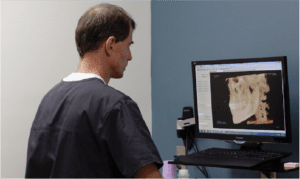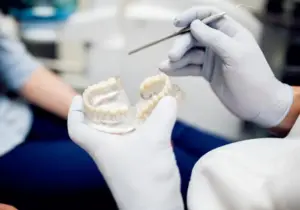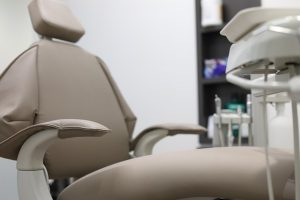Cleft palates in infants aren’t super common, but they’re common enough they warrant the need for a specialist in pediatric maxillofacial surgery to understand how to repair them. Cleft palates can be dangerous for the health of an infant, and will lessen their quality of life with difficulty feeding, eating and (later) speaking. Infants with orofacial clefts (cleft lips and palates) tend to have chronic ear infections and problems with their teeth. Luckily, oral surgeons who specialize in pediatric maxillofacial conditions can repair cleft palates and cleft lips as soon as 9 months after birth.
What is a Cleft Palate?
Think of it this way: cleft = split; palate = roof of the mouth. The palate forms and comes together within the first trimester of fetal development. But sometimes, the palate never fully comes together. When this cleft is just in the lip and nose area, it’s called a cleft lip. A cleft lip presents as a gap, usually on one side of the mouth, where the lip is incomplete, and the gap may run up to the nose. When there is a gap running down the roof of the mouth, it’s called a cleft palate. An infant can have both a cleft lip and a cleft palate. Sometimes these are caused by genetic conditions, but there’s not always a clear cause.
As mentioned above, cleft palates can render infants unable to breastfeed, and make them more susceptible to developing ear and sinus conditions. If left untreated, children develop socio-emotional issues, as the appearance of a cleft lip isn’t regarded as attractive. Cleft palate surgery performed by a pediatric maxillofacial surgeon within the first two years of a child’s life allows the child’s body time to heal and develop naturally. Often, by adulthood, you can barely tell if someone was born with an orofacial cleft.
What is Involved in Mouth Reconstructions for Cleft Palates?
So, how does a maxillofacial surgeon who specializes in pediatric orofacial conditions repair a cleft palate? It’s often an initial surgery that moves tissue from the roof of the infant’s mouth to the soft palate. The reason they usually wait until 1 year to do cleft palate repair (as opposed to cleft lip repair, which is usually done within the first few months of life), is to allow the palate time to change after birth. Bone deformities work differently than soft tissue deformities, and babies develop a lot in the first year. There’s always a possibility the severity of the cleft they were born with may lessen in the first year of life.
Some cleft palates can’t be repaired in one surgery. Regardless, cleft palate repair usually requires follow-up surgeries as the child grows. The pediatric oral surgery specialist will closely monitor the child’s development to determine the best way to minimize orthodontal and speech issues later in the child’s life.










